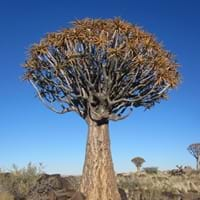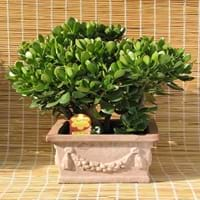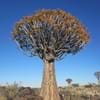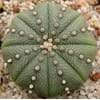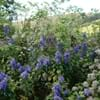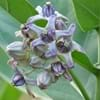Life Span
Perennial
Perennial
Type
Succulent
Cactus or Succulent
Origin
Southern Africa, South Africa
Southern Africa, Madagascar, Asia
Types
Not Available
Crassula
Habitat
Sandy areas, Semi arid regions, Semi desert
Dry areas, Hillside, Semi arid regions, Semi desert
USDA Hardiness Zone
10-15
11-12
Sunset Zone
8, 9, 12, 13, 14, 15, 16, 17, 18, 19, 20, 21, 22, 23, 24
Not Available
Habit
Upright/Erect
Clump-Forming
Minimum Height
Not Available
Minimum Width
Not Available
Flower Color
Lemon yellow
White, Pink, Magenta
Flower Color Modifier
Not Available
Not Available
Fruit Color
Not Available
Non Fruiting Plant
Leaf Color in Spring
Blue Green
Light Green, Blue Green, Gray Green, Dark Green
Leaf Color in Summer
Blue Green
Light Green, Blue Green, Gray Green, Dark Green
Leaf Color in Fall
Blue Green
Light Green, Blue Green, Gray Green, Dark Green
Leaf Color in Winter
Blue Green
Light Green, Blue Green, Gray Green, Dark Green
Leaf Shape
Succulent
Succulent
Plant Season
Spring, Summer, Fall, Winter
Spring, Summer, Fall, Winter
Sunlight
Full Sun, Partial Sun, Partial shade
Full Sun, Partial Sun
Growth Rate
Very Slow
Medium
Type of Soil
Clay, Loam, Sand
Loam, Sand
The pH of Soil
Neutral, Alkaline
Neutral, Alkaline
Soil Drainage
Well drained
Well drained
Bloom Time
Early Spring, Spring
Indeterminate
Tolerances
Drought
Cold climate, Dry soil, Heat Tolerance
Where to Plant?
Ground
Container, Ground, Pot
How to Plant?
Seedlings
Leaf Cutting, Stem Planting
Plant Maintenance
Medium
Medium
Watering Requirements
Average Water Needs
Do Not over Water, Do not water frequently, Does not require lot of watering, Keep ground moist, Medium, Never Over-water, Water when top layer of soil becomes dry
In Summer
Lots of watering
Lots of watering
In Spring
Moderate
Moderate
In Winter
Average Water
Average Water
Soil pH
Neutral, Alkaline
Neutral, Alkaline
Soil Type
Clay, Loam, Sand
Loam, Sand
Soil Drainage Capacity
Well drained
Well drained
Sun Exposure
Full Sun, Partial Sun, Partial shade
Full Sun, Partial Sun
Pruning
Requires very little pruning
Prune if you want to improve plant shape, Remove damaged leaves, Remove dead leaves
Fertilizers
No fertilizers needed
All-Purpose Liquid Fertilizer, fertilize in spring, Nitrogen, Phosphorous, Potassium, Put diluted fertilizers, Water soluble fertilizers
Pests and Diseases
Not Available
Mealybugs, Red blotch, Scale, Spider mites
Plant Tolerance
Drought
Cold climate, Dry soil, Sun
Flower Petal Number
Single
Single
Foliage Texture
Bold
Bold
Foliage Sheen
Matte
Matte
Attracts
Hummingbirds
Butterflies
Allergy
Asthma
no allergic reactions
Aesthetic Uses
Showy Purposes
Beautification, Landscape Designing, Showy Purposes
Beauty Benefits
Not Available
Not Available
Environmental Uses
Air purification
Air purification, Food for insects, Indoor Air Purification, Very little waste
Medicinal Uses
No Medicinal Use
Vomiting
Part of Plant Used
Whole plant
Leaves
Other Uses
Not Available
Decoration Purposes, Showy Purposes, Used as Ornamental plant, Used for its medicinal properties
Used As Indoor Plant
No
Yes
Used As Outdoor Plant
Yes
Yes
Garden Design
Container, Feature Plant, Foundation, Mixed Border, Tropical
Container, Houseplant, Mixed Border, Rock Garden, Wall
Botanical Name
ALOE dichotoma
CRASSULA
Common Name
Kokerboom
Quiver Tree
Jade Plant, Lucky Plant, Money Tree
In Hindi
तरकश ट्री
जेड पौधा
In German
Köcherbaum
Geldbaum
In French
Quiver Tree
Crassula ovata
In Spanish
Árbol de la aljaba
Crassula ovata
In Greek
φαρέτρα Δέντρο
crassula ovata
In Portuguese
Árvore do quiver
crassula ovata
In Polish
Quiver Drzewo
Crassula ovata
In Latin
pharetram ligno
Crassula ovata
Phylum
Tracheophyta
Magnoliophyta
Class
Liliopsida
Magnoliopsida
Order
Asparagales
Saxifragales
Family
Aloaceae
Crassulaceae
Clade
Angiosperms, Monocots
Angiosperms, Core eudicots, Eudicots
Tribe
Not Available
Not Available
Subfamily
Asphodeloideae
Crassuloideae
Number of Species
Not Available
Season and Care of Quiver Tree and Crassula Ovata
Season and care of Quiver Tree and Crassula Ovata is important to know. While considering everything about Quiver Tree and Crassula Ovata Care, growing season is an essential factor. Quiver Tree season is Spring, Summer, Fall and Winter and Crassula Ovata season is Spring, Summer, Fall and Winter. The type of soil for Quiver Tree is Clay, Loam, Sand and for Crassula Ovata is Loam, Sand while the PH of soil for Quiver Tree is Neutral, Alkaline and for Crassula Ovata is Neutral, Alkaline.
Quiver Tree and Crassula Ovata Physical Information
Quiver Tree and Crassula Ovata physical information is very important for comparison. Quiver Tree height is Not Available and width Not Available whereas Crassula Ovata height is 2.50 cm and width 20.30 cm. The color specification of Quiver Tree and Crassula Ovata are as follows:
Quiver Tree flower color: Lemon yellow
Quiver Tree leaf color: Blue Green
Crassula Ovata flower color: White, Pink and Magenta
- Crassula Ovata leaf color: Light Green, Blue Green, Gray Green and Dark Green
Care of Quiver Tree and Crassula Ovata
Care of Quiver Tree and Crassula Ovata include pruning, fertilizers, watering etc. Quiver Tree pruning is done Requires very little pruning and Crassula Ovata pruning is done Prune if you want to improve plant shape, Remove damaged leaves and Remove dead leaves. In summer Quiver Tree needs Lots of watering and in winter, it needs Average Water. Whereas, in summer Crassula Ovata needs Lots of watering and in winter, it needs Average Water.
